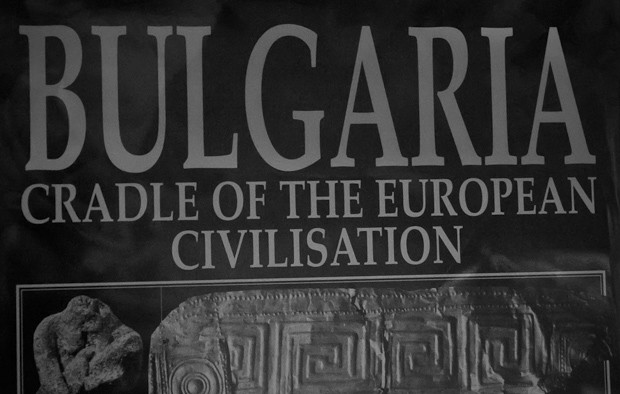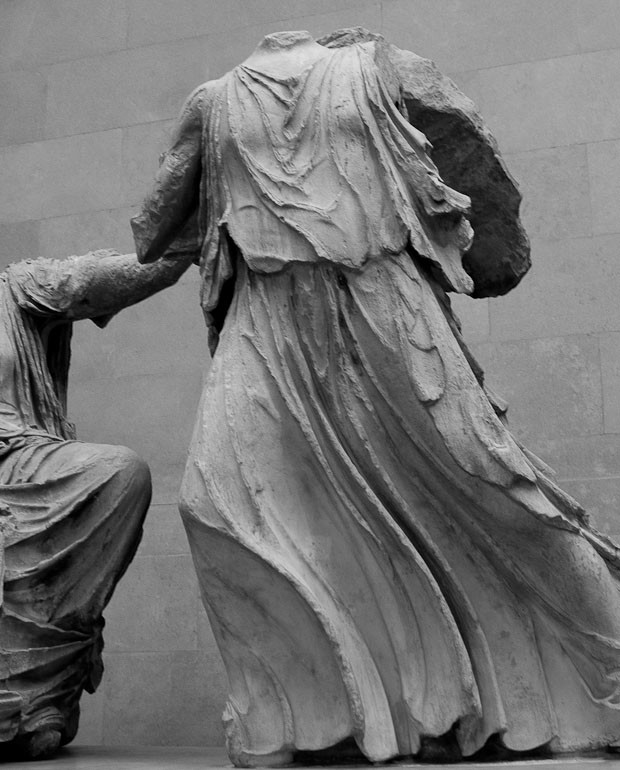On the Politics of Museums
The more time we spend in museums around the world, the more I come to realise how very, very political they are.
Take the National Museum of China. When it closed for refurbishment a couple of years ago, exhibits were arranged according to the Marxist theory of history: Primitive Communism, Slave Society, Feudalism, Capitalism, etc. Soon after reopening last year it hosted an exhibition sponsored by the luxury brandmeister BVLGARI.
We were, in fact, en route to the National Archaeological Museum in Sofia, Bulgaria, when I so carelessly lost my child. It’s a splendid building — the biggest and best of the Ottoman mosques in the city, now home to collections of, well, Christian art, inter alia.
We were there, largely, to find out about Thracia. For, despite a degree in Latin and Greek, all I knew about the ancient province of Thracia was that it was famous for wine. (I once also knew that it was famous for gladiators, and that the poet Ovid was exiled there by the Roman emperor Augustus for reasons he described as “a poem and a mistake”.)
But I’ve never been much cop at geography, so, unlike my son I had no idea that much of old Thracia is now Bulgaria. Further, had anyone pushed me as to the national grouping of the Thracians, I’d have said they were Greek.
I would, however, have been wrong.
And, if you look at the title of this book from the National Archaeological Museum bookshop, I would also have been in trouble.
Now, it’s easy to overstate how much Bulgarians and Greeks dislike each other. What with the euro crisis and everything, Greek-bashing is a popular sport all over Europe, not just in Bulgaria.
However… “Bulgaria — Cradle of the European Civilisation” is what you’d call a statement book title. I am vastly regretting not buying it.
You see, like almost everyone outside the Balkans, I’d credit Greece as the cradle of European civilisation. Democracy, philosophy, theatre, sculpture, rhetoric, science — all that jazz, y’know? (And, yes, it’s a shame about the slavery.)
Inside the museum, the initial impact was a little underwhelming. Or, as my son put it, “Well, this is a bit rubbish.”
Pretty much the entire ground floor of the museum, you see, is taken up with Roman stuff. Not, it has to be said, especially good Roman stuff. Mediocre stelae and indifferent sculptures that would be relegated to the archives of most national museums are displayed in full and, frankly, fairly tedious glory.
Come on, cradle of the European civilisation, I thought to myself. You can do better than this!
Z, whose natural cynicism is enhanced by his experiences of Malaysian science museums, every single one of them sponsored by an oil company and with entire sections devoted to the environmental, social and economic benefits of hydrocarbons, was underwhelmed by the display on early gold mining sponsored by — yes!!! — a mining company.
“Do you think they’ve completely destroyed the archaeological site by mining it?” he asks.
“I’m not sure,” I say. “I’d guess UNESCO stopped them. Which is why they’re sponsoring this, maybe?”
We progress, rather sullenly (we hadn’t had the best start to Sofia, and losing Z didn’t help), upstairs to a display of religious frescoes.
And then, off to one side, unconfidently hidden, we found it. An absolute treasury of Thracian metalwork, pre-Thracian fragments, and the history of very early Bulgaria.
They are not Greek, in the slightest, these lovely pieces of silver and gold, these homages to the great goddess. (The museum goes to pains to point out that the Thracians fought with the Trojans in Homer’s Iliad.)
They are wonderful, though. And deserve, to be honest, a far greater billing than they get. They should be out front, on the ground floor, in pride of place and historical sequence.
Some of the items, curiously, were found not in Bulgaria but in the country that is generally known as Macedonia or the Republic of Macedonia, but, due to an epically savage naming dispute with Greece, is officially known as Former Yugoslav Republic of Macedonia (FYROM)…
The M-word, in fact, comes up a lot in this museum (like “Tibet”, the word “Macedonia” tends to spark passions online).
What never does is the G-word. The early peoples of what is now Greece are described as Achaeans, Aegeans, Myceneans — never Greeks, let alone Hellenes. It is, to be honest, as if Greece has been airbrushed from the history of the region…
Earlier this week, we were wandering around the British Museum, trying to get a head start on the next leg of our journey, to Egypt and across (some of) the Middle East to Greece.
Marvelling at vast pieces from Assyria (in today’s Iraq, where coalition forces used pieces of ancient Babylon to fill sandbags), sculptures, mummies, sarcophagi and grave goods from Egypt, and an entire Lycian monument shipped wholesale from Turkey in the mid-nineteenth century, it was hard not to notice how very little of what is on display was actually British…
And then we came to the Elgin Marbles. Or, as the museum calls them, the Parthenon Sculptures, housed in rooms endowed and built specifically for them.
These are friezes and fragmentary sculptures taken from the Parthenon, most of them by Lord Elgin when he was British Ambassador to the Ottoman Empire, which at that time ruled Athens (his son would go on to burn the Summer Palace in Beijing).
The Greeks want them back — although so far Heidelberg University seems pretty much the only European institution to have given back “their” bit of the Parthenon.
Now, the British Museum, like other museums around the world, has returned the remains of aboriginal people to Australia on request. The sculptures, however, are not people, and the Museum argues that they are so significant a part of the world’s cultural heritage that they belong, in effect, to the world, not only Greece.
The Museum does not claim that Elgin had the right to take the Marbles — the paperwork by which he took them is still debated, and, even at the time, folk including Lord Byron were pretty cross. It refrains from the inflammatory argument that, at the time, the local population was mining the Parthenon for building blocks and even cement.
But it does stand absolutely firm that it will not return them.
And on many levels, it is easy to see why. The sculptures, 2500 years old and broken as they are, have an extraordinary sense of movement — one figure just beginning to rise from sitting, another reaching out to a third… For solid stone, they have incredible grace and life.
Further, were we to return everything in the British Museum to the countries from which it was bought (or looted…), one of the world’s great museums would be no more.
And, surely, that’s the point of museums? To bring together much of the world’s history in one place? And, at the British Museum, millions of people every year can trace that history, and marvel and study the sculptures too.
And yet… and yet… if I were Greek, I’d want the sculptures back. And I wouldn’t be surprised if the Egyptians and Iraqis will want some of their things back, as well, one day.
And one day, further, I think we’ll need to give them to them. Which will be, I think, a shame.



This is such a fantastic blog. You learn so much coming here.
I think what you’re doing with your boy is amazing.
I keep thinking this is book material you know.
Well, I’ll keep my fingers crossed for one… And thanks!
Same feeling at the Hermitage in St. Petersberg–so many of the world’s treasures that disappeared and somehow ended up in the Soviet Union–and yet, what an incredible setting. And while I wanted the works displayed in a more state-of-the-art protected manner, then I wouldn’t have been able to stand inches from the da Vinci Madonna or the Michelangelo sculpture.
Just visited the Met here (http://www.wanderingnotlost.org/2012/01/museum-crawling-at-the-met-new-york-city/) It didn’t disappoint.
Yes! In the British Museum, you can touch the sculptures. You’re not supposed to, mind. But you are close enough to reach out and touch 3000 or 4000 year old pieces of history.
I have never been to the Hermitage or the Met. Would love to visit both…